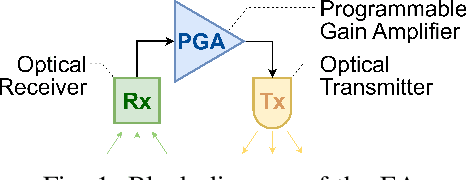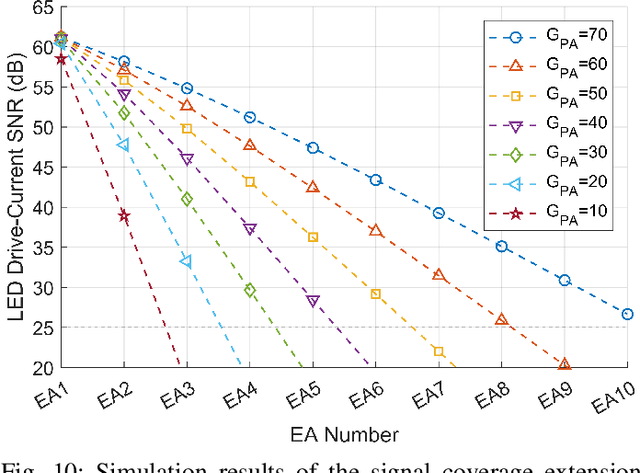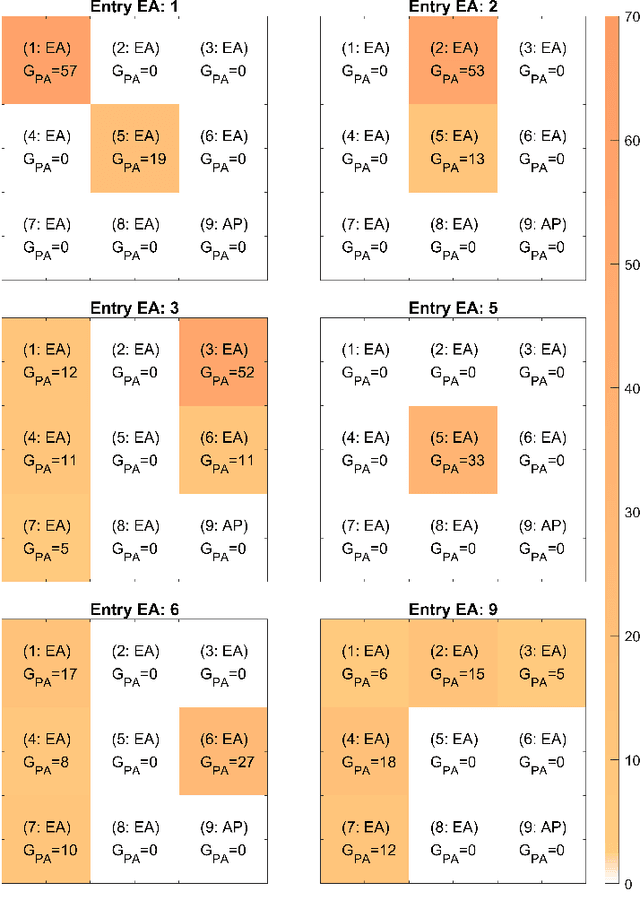Intelligent Reconfigurable Optical Wireless Ether
Paper and Code
Feb 10, 2025



Optical wireless communication (OWC) uses light for wireless data transmission, potentially providing faster and more secure communication than traditional radio-frequency-based techniques like Wi-Fi. However, light's high directionality and its limited penetration ability restrict the signal coverage. To address this limitation, we propose an artificial "optical wireless ether" (OWE) fabric. OWE acts as a reconfigurable electromagnetic (EM) wave-propagating medium, intelligently enhancing the strength of light signals and redirecting their propagation to cover a broader area. Our proposed ether fabric comprises simple optical signal amplification units, called ether amplifiers (EAs), strategically placed in the environment, e.g., on ceilings. The EAs amplify and propagate signals at the analog level and are agnostic to the signal format: Signals propagate wirelessly between the EAs, losing strength due to attenuation during transmission but regaining it as they pass through the EAs. The key challenge in OWE design lies in the fact that, while increasing EA gains can extend signal coverage, it can also create positive feedback loops, resulting in self-interference and amplifier saturation, which distort the signals -- the key challenge in OWE design. This paper presents a systematic theoretical analysis to prevent amplifier saturation while optimizing the performance of OWE in both single-basic-service-set (single-BSS) and multiple-BSS scenarios. Optimization objectives could include signal-to-noise ratio, resource allocation fairness, and mutual interference. Furthermore, we conducted simulations and experiments to corroborate our theories. To our knowledge, ours is the first experimental demonstration of the feasibility of an artificial ether fabric for extending and guiding light propagation, laying a solid groundwork for future development and exploration of OWE.
 Add to Chrome
Add to Chrome Add to Firefox
Add to Firefox Add to Edge
Add to Edge